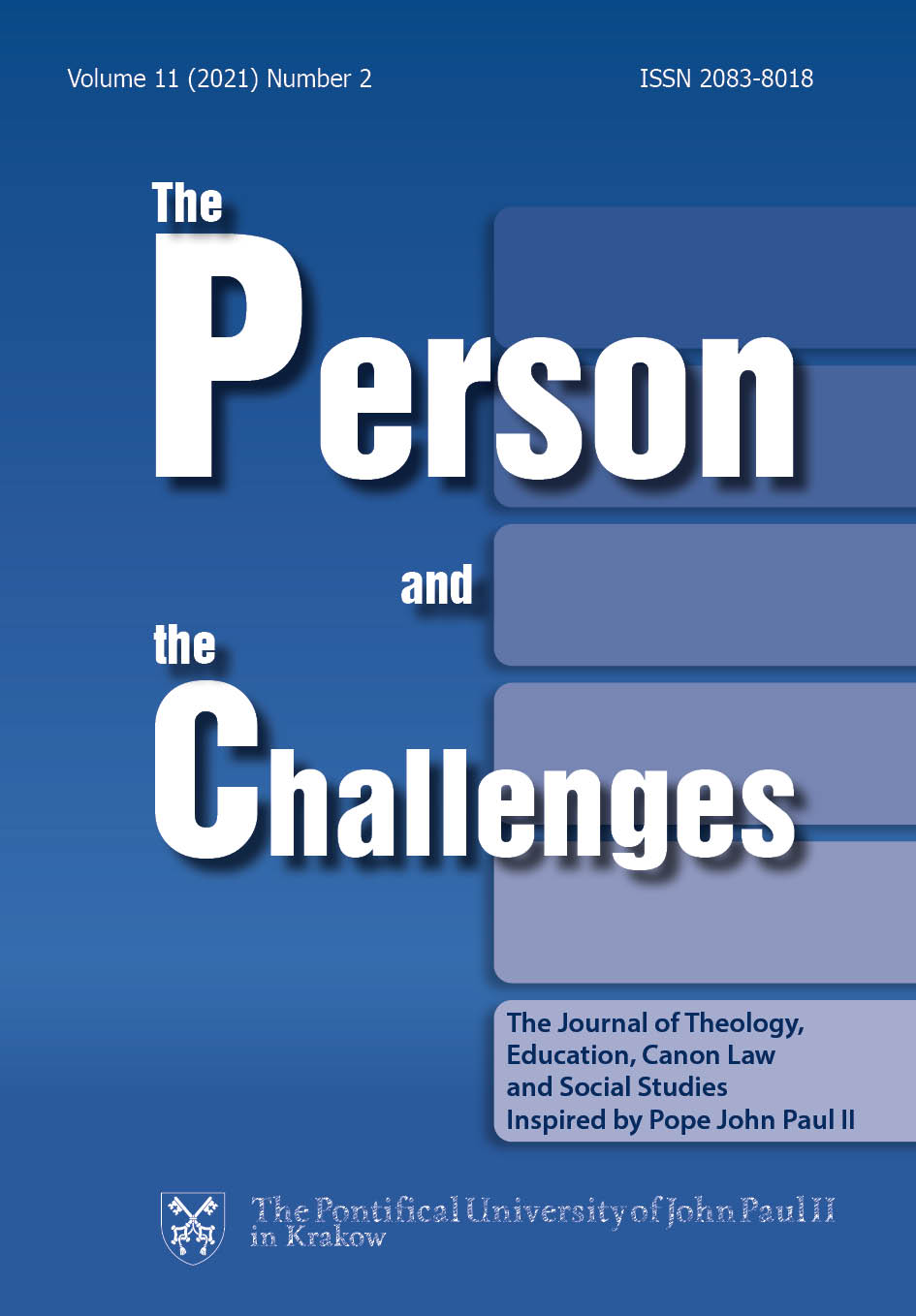Love from the Internet. Tinder app as a challenge for the pastoral care of the church
DOI:
https://doi.org/10.15633/pch.4073Keywords:
Tinder, dating apps, digital generation, love, pastoral care of the ChurchAbstract
The contemporary, expansive development of the Internet and all kinds of mobile tools has changed all areas of human life. Food, health, entertainment, work, social and family ties – all this and many other areas of life are woven into virtual reality. This has also affected the way of getting to know the chosen ones in life. The mobile world has been offering many digital dating tools to seek love of one’s life”. One of them is the “Tinder” mobile application. It is this tool that the article examines, first by analyzing the phenomenon of this invention and its popularity in the context of social sciences, then by discussing it in the perspective of pastoral theology. In the sections of the article, the author presents the following issues: what Tinder consists of; the usage statistics for this tool; the philosophical-sociological background of online-dating; the characteristics of the generation of Tinder users and – finally – the challenges and inspirations Tinder presents to the pastoral care of the Church.
References
Agamben G., Die kommende Gemeinschaft, Berlin 2003, Merve Verlag.
Beck W., Die katholische Kirche und die Medien. Einblick in spannungsreiches Verhältnis, Würzburg 2018, Echter Verlag.
Ben Ze’ev A., Love Online. Emotions on the Internet, Cambridge – New York 2011, Cambridge University Press.
Büsch A., Jesus war kein Chief Digital Evangelist! Digitalisierung als Chance und Herausforderung für die Pastoraltheologie, “Zeitschrift für Pastoraltheologie“ 39 (2019) 1, SS. 7–17.
Castells M., The Internet Galaxy. Reflections on the Internet, Business and Society, New York 2001, Oxford University Press.
Christakis N., Fowler J., Connected. The Amazing Power of Social Networks and How They Shape Our Lives, London 2011, Little – Brown Spark.
Czerska I., Pokolenie “head down” jako konsekwencja smartfonizacji społeczeństwa [The “Head Down” Generation as a Consequence of Smartphonization of the Society], “Research Papers of Wrocław University of Economics“ 459 (2016), SS. 214–221.
De Ruiter J., Weston G., Lyon S., Dunbar’s Number. Group Size and Brain Physiology in Humans Reexamined, “American Anthropologist“ 113 (2011) 4, SS. 557–568.
Eler A., The Selfie Generation. How Our Self-Images Are Changing Our Notions of Privacy, Sex, Consent and Culture, New York, Skyhorse Press 2017.
Frees B., Koch W., ARD/ZDF-Onlinestudie 2018. Zuwachs bei medialer Internetnutzung und Kommunikation, “Media Perspektiven“ 9 (2018), SS. 398–413.
Giussani L., Porta la speranza. Primi scritti, Genua 1997, Marietti.
Gołąb-Andrzejak E., Konsumenci pokolenia Y – nowe wyzwanie dla komunikacji marketingowej [The Y Generation Consumers – a New Challenge for Marketing Communication], “Handel Wewnętrzny“ 2 (2016) 361, SS. 140–151.
Greenfield A., Radical Technologies. Design of Everyday Life, London – New York 2017, Verso Books.
Hoffmann D., Mobile Medien, in: D. Hoffmann, R. Winter (Hg.), Mediensoziologie. Handbuch für Wissenschaft und Studium, Baden-Baden 2018, Nomos Verlag, SS. 221–228.
Jabłońska M., Billewicz K., Pokolenie przełomu w Web 2.0 [Breakthrough generation in WEB 2.0], “Acta Universitatis Lodziensis. Folia Sociologica“ 56 (2016), SS. 83–97.
Morbitzer J., O istocie medialności młodego pokolenia [About the nature of the young generation mediality], “Neodidagmata“ 33/34 (2012), SS. 131–153.
Pirker V., Fragilitätssensible Pastoralanthropologie Impulse aus Praktiken der (Selbst)Inszenierung in Social Media, “Zeitschrift für Pastoraltheologie“ 39 (2019) 1, SS. 44–58.
Rosenfeld M., Reuben T., Searching for a Mate. The Rise of the Internet as a Social Intermediary, “American Sociological Review“ 77 (2012) 4, SS. 523–547.
Schachtner C., Duller N., Kommunikationsort Internet. Digitale Praktiken und Subjektwerdung, in: T. Carstensen, C. Schachtner, H. Schelhowe, R. Beer (Hg.), Digitale Subjekte. Praktiken der Subjektivierung im Medienumbruch der Gegenwart, Bielefeld 2014, Transcript Verlag, SS. 81–154.
Schick L., Auch Jesus würde twittern, “Impulse für die Pastoral“ 1 (2019), SS. 21–22.
Schwab F., Carolus A., Brill M., Irrtümer, die Sie womöglich schon immer über junge Mediennutzende pflegten und nun zu hinterfragen wagen, in: W. Appel, B. Michel-Dittgen (Hg.), Digital Natives. Was Personaler über die Generation Y wissen sollten, Wiesbaden 2013, Springer Gabler Verlag, SS. 179–204.
Simanowski R., Facebook-Gesellschaft, Berlin 2016, Matthes & Seitz Verlag.
Stalder F., Kultur der Digitalität, Berlin 2016, Suhrkamp Verlag.
Tapscott D., Grown Up Digital. How the Net Generation Is Changing Your World, New York 2009, McGraw – Hill Education.
Trültzsch-Wijnen S., Identität, Orientierung und Lebenswelt. Ein mehrdimensionaler Blick auf Situatives Aushandeln von Privatheit im Social Web, Baden-Baden 2018, Springer Professional Verlag.
Ward J., Swiping, Matching. Chatting Self-Presentation and Self-Disclosure on Mobile Dating Apps, “Humanit“ 13 (2016) 2, SS. 81–95.
Wasylewicz M., Transformacja sposobu komunikowania się pokolenia X, Y, Z. Bilans zysków i strat [Transformation of the X, Y, Z Generation Communication Way. The Balance of the Profits and Loss], “Zeszyty Naukowe Wyższej Szkoły Humanitas. Pedagogika” 13 (2016), SS. 133–141.
Downloads
Published
Issue
Section
License
Authors who publish with this journal agree to the following terms:
- Authors retain the copyright and full publishing rights without restrictions, and grant the journal right of first publication with the work simultaneously licensed under a Creative Commons Attribution 4.0 International License that allows others to share the work with an acknowledgement of the work's authorship and initial publication in this journal.
- Authors are able to enter into separate, additional contractual arrangements for the non-exclusive distribution of the journal's published version of the work (e.g., post it to an institutional repository or publish it in a book), with an acknowledgement of its initial publication in this journal.
- Authors are permitted and encouraged to post their work online (e.g., in institutional repositories or on their website) prior to and during the submission process, as it can lead to productive exchanges, as well as earlier and greater citation of published work (See The Effect of Open Access).

